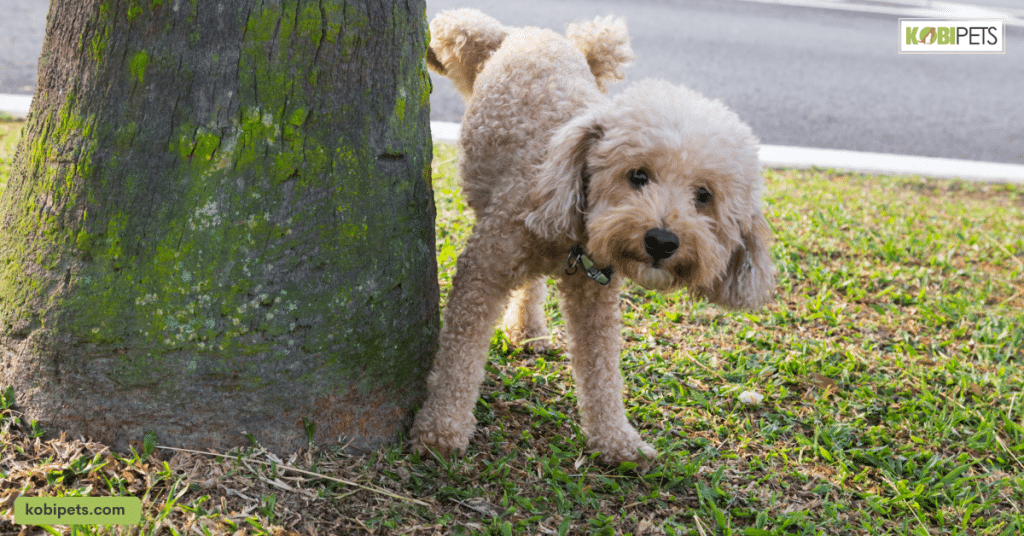
Nosebleeds in dogs, medically known as epistaxis, can arise from various causes including trauma, tumors, or blood clotting disorders. It’s crucial for dog owners to monitor the frequency and severity, as frequent or heavy bleeding might indicate an underlying medical condition. Immediate vet consultation is essential to ensure your pet’s health and accurate diagnosis.
A sudden nosebleed in our furry friend can be alarming. Known medically as ‘epistaxis’, these nosebleeds in dogs might signal underlying health issues. It’s essential for dog owners to be informed, not just to react appropriately but to also understand potential causes that might be impacting their pet’s well-being. Join us as we explore this crucial topic.
Common Causes of Nose Bleeds in Dogs
Every dog owner knows the pang of worry that strikes when something seems amiss with their furry friend. A nosebleed, while distressing to witness, is a symptom that can hint at several underlying issues. Unraveling the root causes can be pivotal in understanding and ensuring the overall health of your pet.

Common Causes of Nose Bleeds in Dogs
- Trauma: Whether it’s a playful roughhousing session that got too intense or an unfortunate collision with a furniture piece, direct trauma to the nose or face is a common culprit for nosebleeds.
- Nasal Growths: Just like humans, dogs can develop tumors or polyps in their nasal passages. These growths can cause blockages or bleed when they become irritated.
- Clotting Issues: Blood clotting is a complex process involving various factors and cells, notably platelets. Disorders affecting this process can lead to spontaneous or prolonged bleeding episodes. Diseases like Von Willebrand’s, a genetic disorder found in some dog breeds, can be a reason.
- Toxins: The accidental ingestion of certain substances can cause nosebleeds among other symptoms. Rat poison, for instance, works by disrupting the blood’s ability to clot, leading to internal and external bleeding.
- Diseases: Beyond the aforementioned clotting disorders, other infectious diseases or conditions, such as fungal infections, can result in nosebleeds. For instance, the Aspergillus fungus affects the nasal passage and can lead to bleeding.
As with any health concern, knowledge is the key to prevention and treatment. By understanding the potential reasons behind a dog’s nosebleed, owners can take proactive measures to safeguard their pet’s health.
Identifying and Monitoring Nose Bleeds
For pet owners, observing a nosebleed in their canine companion can be a concerning sight. However, recognizing the nuances in its appearance and understanding its implications is essential.

Identifying and Monitoring Nose Bleeds
- Nostril Involvement: Bleeding might occur from one nostril, suggesting localized issues, or from both nostrils, hinting at more systemic problems.
- Nature of Blood Flow: It can range from a simple drip, usually due to minor irritations, to clotted blood, indicating more profound internal bleeding or prolonged episodes.
- Frequency: Regular occurrences, even if they seem minor, should be noted and communicated to a vet.
- Duration and Severity: Track how long the bleeding lasts and its intensity, with prolonged or heavy episodes being particularly concerning.
- Accompanying Symptoms: Watch for signs like sneezing (potential nasal irritation), coughing (indicative of blood ingestion), and facial swelling (possible trauma or growth).
The health and well-being of our pets often lie in the details. By diligently identifying and monitoring nosebleeds, owners can ensure timely and appropriate care for their furry friends.
When to Seek Veterinary Help
As pet owners, we’re the first line of defense when it comes to our furry companions’ health. Knowing when to seek veterinary help can make all the difference in ensuring the well-being of our beloved pets. In this guide, we’ll explore the crucial warning signs that indicate it’s time to consult a veterinarian.
1. Uncontrolled or Frequent Nosebleeds
Nosebleeds, also known as epistaxis, can occur in dogs due to various reasons, ranging from minor irritations to severe underlying conditions. When you notice uncontrolled or recurrent nosebleeds in your dog, it’s a clear signal that professional attention is needed.
This could be indicative of underlying health issues such as trauma (from accidents or rough play), infections (bacterial or fungal), or clotting disorders.

2. Difficulty Breathing
Breathing difficulties in dogs can be a distressing sight for any pet owner. Labored breathing, wheezing, or panting excessively without apparent cause should never be ignored.
These symptoms could be due to respiratory infections (such as kennel cough or pneumonia), allergies, or more severe issues like foreign body obstructions (e.g., something stuck in the airway).
3. Lethargy and Loss of Appetite
A sudden and prolonged lack of energy or loss of appetite in your dog is often a red flag. These behavioral changes can be indicative of various underlying illnesses or discomfort. They might result from infections, gastrointestinal problems, dietary issues, or more severe conditions.

4. Vomiting and Diarrhea
While occasional stomach upset can be normal, persistent vomiting or diarrhea is cause for concern. These symptoms can be the result of gastrointestinal problems, dietary issues, or underlying illnesses. Prolonged vomiting and diarrhea can lead to dehydration, a potentially life-threatening condition.
5. Changes in Urination
Significant changes in your dog’s urination patterns or behavior can be indicative of various health issues. Increased frequency, changes in urine color or consistency, straining to urinate, or signs of pain during urination may signal kidney or bladder problems, urinary tract infections, or even diabetes.

6. Seizures or Neurological Symptoms
The sight of your dog experiencing seizures or sudden disorientation and other neurological symptoms can be distressing. These signs are indicative of a medical emergency, and immediate veterinary help is crucial. Seizures can have various causes, including epilepsy, toxin exposure, or underlying neurological conditions.
While we strive to provide the best care for our pets, recognizing when to seek veterinary help is equally important. Early intervention can prevent minor issues from becoming major health concerns and ensure your furry friend lives a happy, healthy life. If you notice any of these warning signs, don’t hesitate to consult your veterinarian for professional guidance and care.

Diagnosis and Treatment Options
Understanding the diagnostic methods that veterinarians use to identify the root cause of nosebleeds and the treatment options available is essential for providing the best care for your canine companion. In this guide, we’ll explore these crucial aspects to help you navigate your pet’s healthcare journey.
| Diagnostic Methods | Potential Treatment Options |
|---|---|
| – Blood Tests: | – Medications for clotting disorders |
| – X-rays (Radiography): | – Surgery or other treatments for tumors |
| – Nasal Endoscopy: | – Antibiotics or antifungals for infections |
| – Symptomatic treatment for comfort | |
| – Supportive care for overall well-being |
Understanding the diagnostic and treatment options available for nosebleeds in dogs empowers you to make informed decisions about your pet’s health. Remember that early intervention and consultation with a veterinarian are key to providing the best care for your furry companion.

Prevention and Care at Home
As responsible pet owners, ensuring the well-being of our canine companions is a top priority. When it comes to nosebleeds in dogs, prevention and at-home care play significant roles in maintaining their health.
In this guide, we’ll explore essential tips for preventing nosebleeds and minimizing risks, allowing you to keep your furry friend safe and sound.
- Safe Play and Exercise to Avoid Trauma: Engage in safe play and exercise routines to reduce the risk of accidental injuries to your dog’s nose or face. Supervise playtime with other dogs or during vigorous activities to prevent rough play that could lead to trauma. Use appropriate toys and equipment to minimize the potential for accidents.
- Regular Check-ups and Blood Tests: Schedule regular veterinary check-ups to monitor your dog’s overall health. Discuss your concerns about nosebleeds with your veterinarian during these visits. Blood tests can help identify underlying clotting disorders or other health issues, enabling early intervention if necessary.
- Avoidance of Toxins or Dangerous Medications: Keep your home and surroundings free from substances that can be toxic to dogs, such as rat poison, certain plants, or cleaning chemicals. Ensure that your dog cannot access hazardous substances or medications, especially those that can affect blood clotting. Store all potentially dangerous items securely out of your pet’s reach.
By implementing these preventive measures and practicing vigilant care at home, you can significantly reduce the risk of nosebleeds and other health issues in your canine companion.
Remember that a proactive approach to your pet’s health, regular check-ups, and a safe living environment are key factors in providing a long and happy life for your furry friend.

Conclusion
Understanding, monitoring, and addressing nosebleeds in dogs are vital for responsible pet ownership. Remember, maintaining a strong relationship with your veterinarian is key to ensuring your furry friend’s well-being. With their guidance and your care, you can provide a happy and healthy life for your beloved pet.






